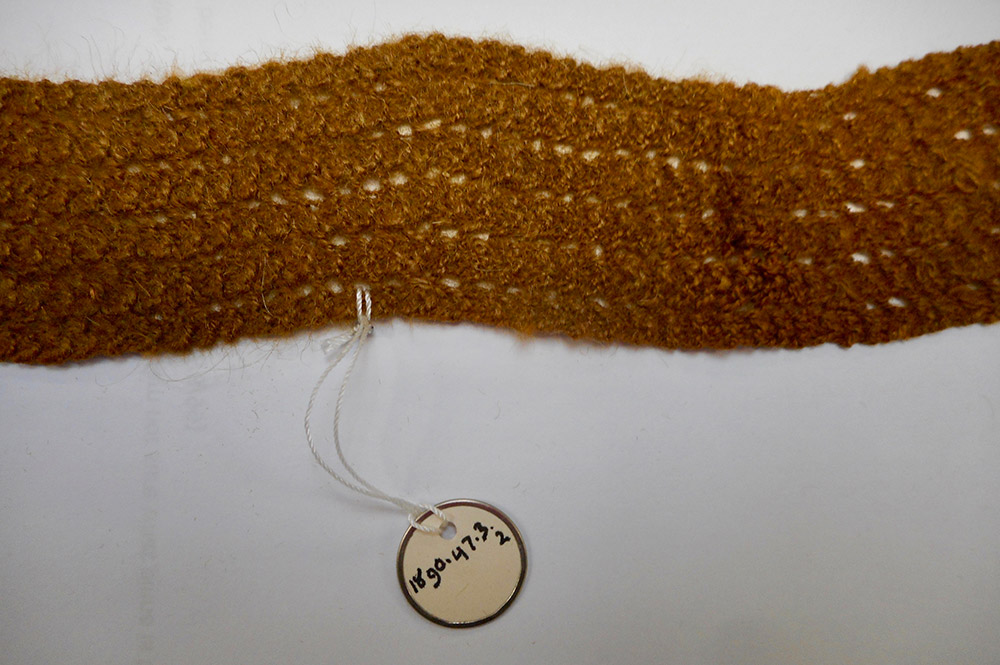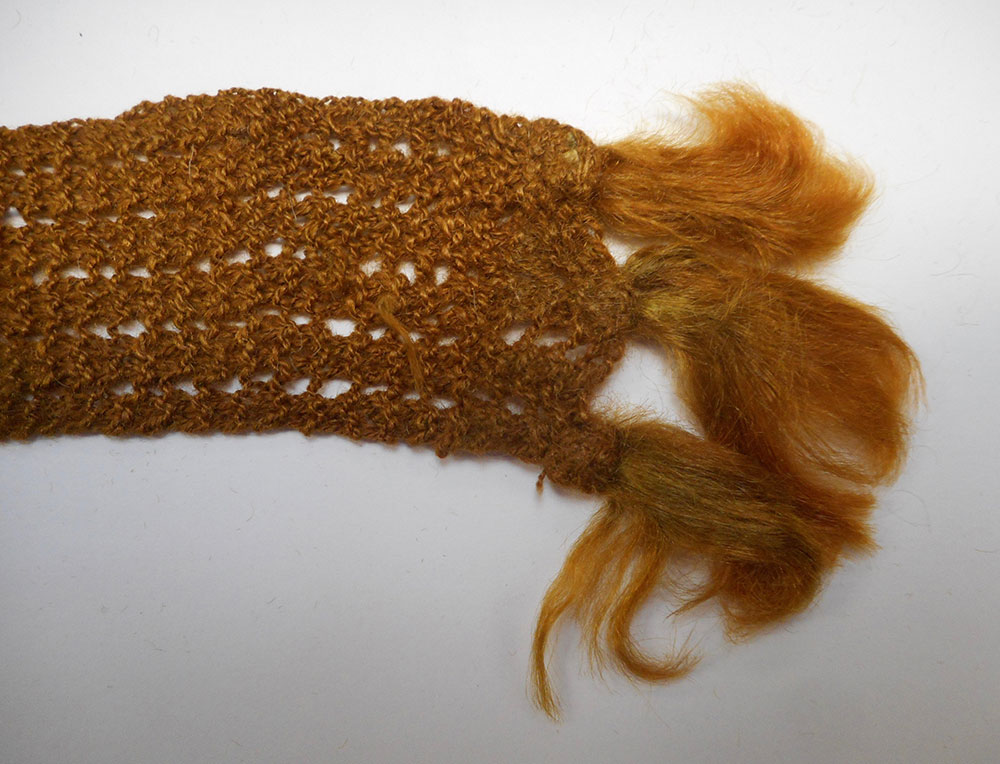Knitted belt, 19th c.
Knitted belt, 19th century, I-Taranto. GB-Oxford, Pitt Rivers Museum 1890.47.3 .2 (MS Inventory 60).
Sea silk, knitted in hole pattern, 6 stripes of 3 stitches each (probably). Finish on both sides 3 combed fibre beard each, ca 3 cm long. Whole belt waved in 5 cm distance. Length 103 cm, width 3,5 cm.
Label, handwritten: “Natural & prepared silk of the byssus of a bivalve mollusk pinna, with articles made of it. TARANTO, S. ITALY. Dd. Rev. G.J. Chester … 1884 & e. Hervey coll. …. Transfrd from Zool. Dept. 1890″
This belt belonged to the collection of Rev. Greville John Chester (1830-1892). They were donated to or bought by the Oxford Natural History Museum in 1884. In 1890 it was given to the Pitt Rivers Museum, where it was kept in a jar, together with the knitted glove and beards.
Pinna shells and fibre beards are listed in various catalogues, such as “A Catalogue of the Ashmolean Museum Descriptive of the zoological specimens, antiquities, coins, and miscellaneous curiosities” of 1836
No 233 und 234: Pinna rudis with the byssus or beard
No 235 Pinna nobilis
No 236 Pinna rudis
“Manuscript Catalogues of the Early Museum Collections 1683-1886” von 2002, p. 125, No 149: Silk from Pinna marina…
“Book of the Senior Proctor”, 17th century, Sericum e Pinnâ marina ex dono Dñi Gul. Charleton e medio Temp. Lond. Byssus marina (Silk from the Pinna marina, given by William Charleton of Middle Temple, London. Sea-silk.)


